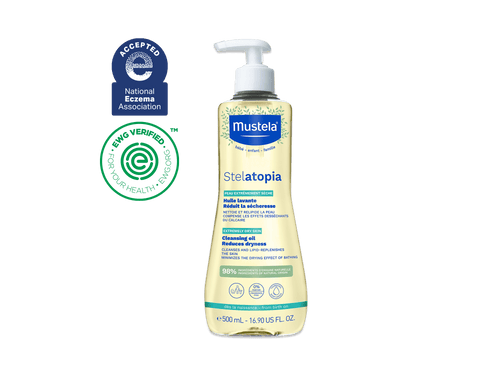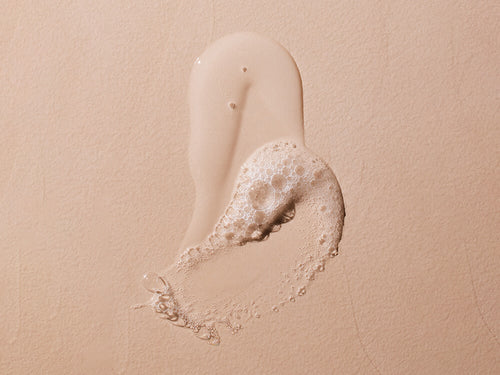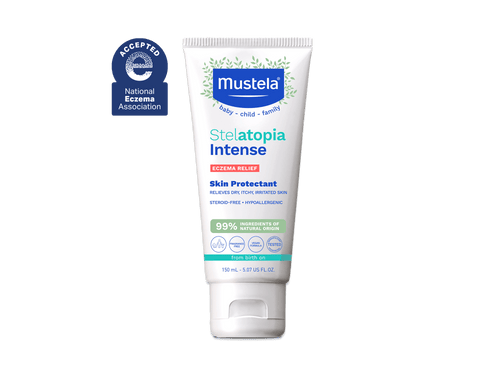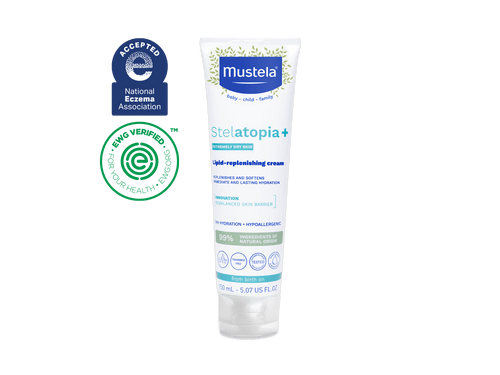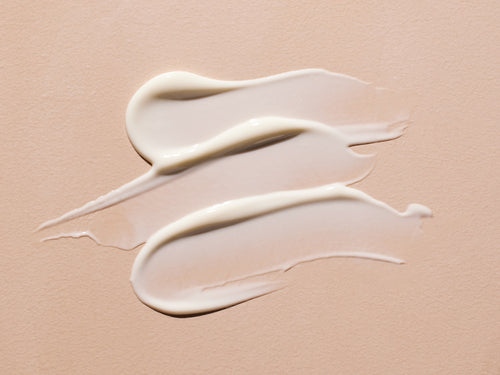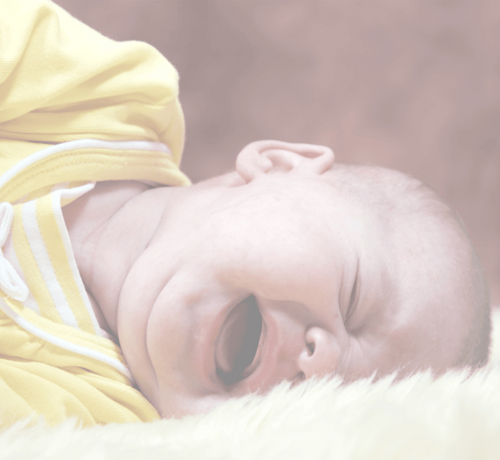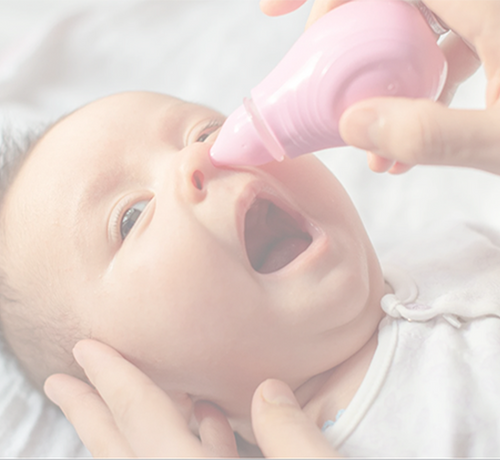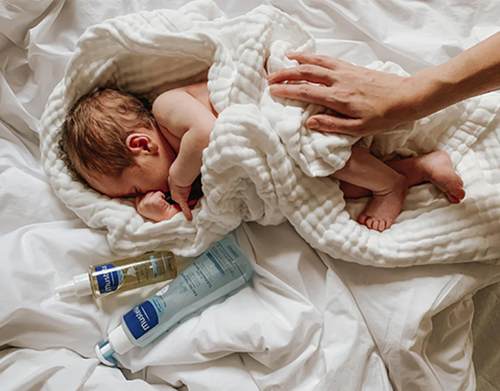When you welcome a new baby into your family, life is full of wonderful firsts: the first smile, the first laugh, the first full-night’s sleep. But with those developmental milestones also come some less-welcome firsts — particularly, the first eczema (or atopic dermatitis) flare-up.
When those red, itchy patches show for the first time, it’s not uncommon for parents to ask, “How can I care for my baby’s skin and keep eczema from flaring up?” It’s an excellent question, and Mustela is here to help.
Table Of Contents
- What Is Baby Eczema?
- What Causes Baby Eczema?
- What Are Early Signs And Symptoms Of Baby Eczema?
- What Does An Eczema Flare-Up Look Like?
- Baby Eczema Flare-Up Treatment And Care
- Baby Eczema Flare-Up Prevention
- When To See A Doctor
What Is Baby Eczema?
Baby eczema, also known as atopic dermatitis, is a common (and often harmless) skin condition caused by some form of allergy and characterized by red (or yellow), swollen, and itchy skin. It’s that simple. Not such a scary term now, is it?
Baby eczema usually begins during the first two months to five years of your little one’s life. The good news is that this bothersome condition will most likely disappear by the time they reach adolescence.
Eczema most commonly appears on newborns’ faces. However, it can appear anywhere, as it’s not restricted to one part of the body. To help you better understand this condition, it’s important that we first define some scientific terms.
What Is Atopy?
As a reminder, baby eczema is commonly referred to as atopic dermatitis. Atopic dermatitis can be broken down into two terms, atopic and dermatitis.
The first term to understand is the noun atopy (atopic is the adjective form). Atopy refers to the genetic tendency to develop allergic reactions. So if you start sneezing when the pollen count gets too high, or if you can’t have a cat in the house because your nose won’t stop running, you likely have atopy.
Researchers estimate (Reference: aafa.org) that some form of allergy affects approximately 30 percent of the adult population of the United States and 40 percent of the child population.
What Is Dermatitis?
Dermatitis is a condition characterized by red (or yellow), swollen, and sore skin. Chances are, you’ve experienced dermatitis in one form or another many times during your life. This is because there are many triggers that can cause dermatitis.
The most common triggers include the following: food allergies, environmental allergies, temperature, synthetic clothing materials, pollution, and even an over-zealous hygiene routine. Needless to say, dermatitis is a very common condition.

Source: dermoscribe.com
What Is Atopic Dermatitis (Baby Eczema)?
Atopic dermatitis is simply the combination of atopy and dermatitis. So if atopy is the tendency to develop allergic reactions and dermatitis is a skin condition characterized by irritated skin, then atopic dermatitis (baby eczema) occurs when your little one’s skin becomes irritated as the result of an allergen.
What Causes Baby Eczema?
Genetics
Like most allergies, baby eczema is a genetic condition. This means that it is hereditary—passed down from parents to children.
- If only one of the parents is atopic, there is a 40 to 50 percent chance that the child will inherit this trait.
- If both parents are atopic, there is a 50 to 80 percent chance that the child will be atopic as well.
So ask yourself:
- Are you or your partner prone to dry skin?
- Do you or your partner have eczema (atopic dermatitis)?
Chances are, if you have eczema or atopic-prone skin, your baby will have it too. And that’s OK. Identifying your baby’s likelihood to develop eczema early on and taking early action can help reduce the risk of flare-ups by 33 to 50 percent.
Because eczema is genetic, there is no cure, just as there’s no permanent cure for allergies. Thankfully, there are a number of simple treatment and prevention options (which we’ll discuss later). By taking a few simple steps, you can comfort your baby during flare-ups while also helping to prevent future outbreaks.

What Are Early Signs And Symptoms Of Baby Eczema?
It’s important to watch for early signs and symptoms that may indicate that your baby has atopic-prone skin or eczema. Below are some factors to take into consideration.
Dry Skin vs. Eczema
While dry skin and eczema are completely different conditions, the two sometimes — although not always — appear at the same time. If your little one shows signs of skin irritation often (such as rough, red spots) but their skin easily goes back to normal with a little extra love, it’s most likely dry skin.
However, if that dryness and irritation is more difficult to treat and seems to significantly bother your baby, you may be dealing with eczema. Here are some signs of eczema to look for:
- Your child’s skin seems to itch regularly.
- Even though you apply cream on your baby’s skin, it still remains rough (the treatment options we recommend below will help with this).
- Your baby has trouble falling asleep.
- Yes, there could be many other reasons for their trouble sleeping, but taken in combination with other signs on this list, it usually indicates eczema-prone skin.
- Red patches appear on your child’s chin, cheeks, arms or belly.
- Slight oozing may appear on the red patches.
What Does An Eczema Flare-Up Look Like?

An eczema flare-up is simply the visible reaction on your little one’s skin when an allergen triggers their eczema. It usually goes something like this:
- In the beginning, you’ll see some slight redness on your baby’s skin caused by their own scratching. You may even see darker red lines where their fingernails left marks.
- The continued scratching and redness will cause their skin to thicken and swell.
- Left untreated, or after a long night with lots of scratching, your baby’s skin can develop small, slightly visible blisters.
- Even with treatment, those blisters may break open and start to ooze a translucent liquid. If the scratching stops, those blisters will dry up, crust over, and disappear by themselves.
- If the scratching doesn’t stop and skin is further damaged, it can lead to a bacterial infection that may require antibiotics.
As serious as flare-ups sound, there are simple, effective ways to manage them. With a little extra love and care, you can relieve your baby’s symptoms and work to prevent future flare-ups.
Baby Eczema Flare-Up Treatment And Care
Despite your best preventive efforts, a flare-up is bound to occur. Don’t feel bad. It’s just the nature of the condition.
Identify And Remove The Allergen
It’s important to inspect your baby’s environment to see what may have caused their initial skin irritation. Is the air in your house very dry? Are your baby’s clothes too tight? Maybe they came in contact with certain fabrics like wool or polyester before the flare-up.
If you identify something as a possible trigger, be sure to remove it from your baby’s environment to help prevent further reaction. And if you notice your baby itching, try cutting their fingernails or putting on baby mittens to avoid unnecessary scratches.
Moisturize And Hydrate
As we learned above, eczema-prone skin is especially susceptible to the irritation and damage caused by allergens. Because of this, it is especially important to take steps to restore your baby’s hydrolipidic layer by hydrating and moisturizing your baby’s skin every day.
But which moisturizer is best? Look for a gentle formula that contains ingredients like sunflower oil, avocado, and plant-based carnauba wax. It’s also important to avoid moisturizers that contain parabens, phthalates, and phenoxyethanol.
The Mustela Eczema Bath and Hydration Bundle has the ingredients your baby’s skin needs for daily care. The Sunflower Oil Distillate soothes and moisturizes your little one. And since it’s free from harmful chemicals, you don’t have to worry about using it regularly.
For extra TLC during a flare-up, treat your little one to our Stelatopia Intense Eczema Relief. Made with 99% ingredients of natural origin, this emollient helps relieve discomfort, itching, and irritation caused by eczema flare-ups while restoring skin’s moisture barrier.

Baby Eczema Emollient Balms And Creams
If you’re familiar with the term ‘emollient,’ you might be under the impression that it’s just a fancy name for a moisturizer. At the most basic level, you’d be correct: an emollient does help moisturize your baby’s skin.
But the best emollients, like Mustela’s Stelatopia Emollient Cream, do so much more than just moisturize. For example, Stelatopia products contain gentle ingredients that act as occlusives, humectants, and lubricants.
Occlusives
An occlusive acts like a layer of oil (similar to the hydrolipidic layer mentioned earlier) on the surface of your baby’s skin to slow down water evaporation. Common occlusives you may already be familiar with include petroleum jelly and olive oil.
Humectants
A humectant absorbs water from above and below it. When spread on your baby’s skin, it absorbs moisture from the air and from the dermis and hypodermis (the lower two layers of skin).
This trapped moisture benefits your baby’s epidermis (top layer of skin) by keeping it hydrated. Common humectants you may already be familiar with include glycerin and urea.
Lubricants
A lubricant reduces the friction between your baby’s skin and anything that may rub against it. This keeps clothing or blankets or even the touch of your fingers from damaging your baby’s atopic-prone skin and causing a flare-up. Many occlusives and humectants also act like lubricants.
The Advantages of Using Emollient Balms And Creams
The combination of the above ingredients offers many benefits for your baby’s skin:
- They help repair and restore the protective hydrolipidic layer.
- Over time, they help skin become more supple and resistant to damage.
- They reduce the risk of eczema flare-ups by 33 to 50 percent.
Before choosing an emollient product, it’s important to remember that your baby’s skin is still developing. Their dermis is only ⅓ as thick as an adult’s dermis and is much more permeable to environmental toxins. In fact, your baby’s skin will take three years from birth to develop the same characteristics as adult skin.
Because your baby’s skin is so fragile, we highly recommend using a product that has been specially designed for babies and children, like Stelatopia Emollient Cream. Stelatopia products are so safe you can use them the first day your baby is born.
Stelatopia Cleansing Gel is specifically designed for extremely dry and eczema-prone skin. The all-natural formula contains 98-percent naturally derived ingredients, including sunflower oil distillate, Avocado Perseose, and shea butter to soothe irritated skin and prevent itchy outbreaks.
At the first sign of a flare-up, apply an emollient product two times per day to treat the red and inflamed areas. We recommend our steroid-free Stelatopia Intense Eczema Relief for soothing your little one’s discomfort and restoring their skin’s moisture barrier.
You can even continue the treatment during bath time by using gentle bath products, like Stelatopia Cleansing Oil, and a shampoo designed specifically for babies with eczema, such as Stelatopia Foam Shampoo.
The Right Pajamas
In addition to using the right skincare products, you can also take steps to protect your baby’s skin from further irritation while they sleep. This is especially important because you lose more water at night.
To help lock in moisture and soothe your baby’s skin, we recommend trying Mustela’s Stelatopia Skin Soothing Pajamas. These use microcapsule technology to deliver skin-soothing moisture directly to your child's skin all night long.
In addition, they're made from 100% cotton, a natural fiber that won’t irritate your baby’s skin the way synthetic fibers can. Synthetic fibers can also trap heat and moisture, making them the perfect environment for bacteria to grow.
Because of this, natural or organic fabrics are the way to go any time of day (or night).
Baby Eczema Flare-Up Prevention
Eczema flare-ups may begin as early as two months after birth. But you can take steps to prevent these breakouts the day your baby is born, and every day thereafter, by applying an emollient product.

Doing so at least once per day will keep red, itchy patches from popping up. It can also be a bit of a game: a kiss on the shoulder when the right arm is covered, two kisses inside the hand when the left arm is covered, and a surprise tickle just for good measure!
Additionally, you can take steps to avoid certain things that are more likely to contribute to the itchy, red breakouts. These allergens and environmental factors include:
- Dust
- Pet dander
- Harsh soaps
- Dry, rough clothing
- Tight clothing
- Hot water
- Chlorinated water
- Certain fabrics like wool or polyester
- Very dry air
- High ambient temperatures
Of course, it is not always possible to anticipate and avoid everything that can cause a flare-up on your baby’s delicate skin. But there’s no need to panic if your baby gets too hot or if they like to cuddle up to your pretty wool pullover. Just keep their skin covered with an emollient, and they’ll be fine.
And if you find that your baby loves playing in water, keep the bath water lukewarm and add a drop of Mustela Stelatopia Cleansing Oil to keep harmful chemicals from irritating their skin. This can even be used in their inflatable pool (filled with unchlorinated water, of course) to prevent red, rashy skin.
However, even with the added oil, it’s best to limit the amount of time your baby spends in the water each day. The American Academy of Dermatology Association recommends no more than 20 minutes of soaking. Otherwise, you risk drying out your little one’s skin even more.
Ideally, experts suggest even less time than that. Typically, five to 10 minutes will do the trick, so keep your baby’s bath time short and sweet.
Additional Baby Eczema Prevention Tips
Other steps you can take to prevent baby eczema flare-ups and discomfort include:
- Using a mild, unscented laundry soap
- Washing your baby with a fragrance-free cleanser, like Stelatopia Cleansing Gel
- Adding an oatmeal soaking product to the bath
- Patting your baby’s skin dry instead of rubbing
- Moisturizing while your baby’s skin is still wet
- Dressing your baby in loose clothing
- Not overdressing or using too many blankets
- Using wet wrapping therapy
- Putting a humidifier in the nursery to keep the air moist
- Limiting time in the sun
- Using an SPF 50 Mineral Sunscreen Stick when outside
Of course, every baby is different. So you may need to experiment a bit to see what works best for your little one.
When To See A Doctor

Oftentimes, there’s no need to call a doctor at the first sign of an eczema flare-up. But when a flare-up does occur, it is important to apply an eczema treatment right away and follow the steps in the Additional Baby Eczema Prevention Tips section.
If your baby’s eczema doesn’t start to fade within a week of treatment, it’s time to call a doctor. Again, there’s very likely little to be concerned about. Your baby’s symptoms may just require a prescription-strength antihistamine or hydrocortisone cream to help clear it up.
If you do notice yellow or light-brown crust or blisters, call your doctor, as this could be a sign that your baby has a bacterial infection that requires antibiotics. These are often the worst-case scenarios.
Treat And Prevent Future Eczema Flare-Ups
Despite your best efforts, there will be times when your baby’s eczema will flare up. Just remember that treatment and prevention are both important.
Prevent flare-ups by regularly using a gentle moisturizer, like our Stelatopia Emollient Cream, on your little one's skin. This fragrance-free cream is perfect for everyday maintenance and care for extremely dry to eczema-prone skin.
And when your baby experiences a flare-up, look around at their environment and remove anything that could be causing an allergic reaction. Then, apply Stelatopia Intense Eczema Relief to red patches and areas of your baby’s body where they are most likely to break out (face, elbows, knees).
These simple steps are often all it will take to comfort your baby and treat their eczema flare-up. With the eczema gone, your baby will feel better and sleep better. And, hopefully, so will you!



